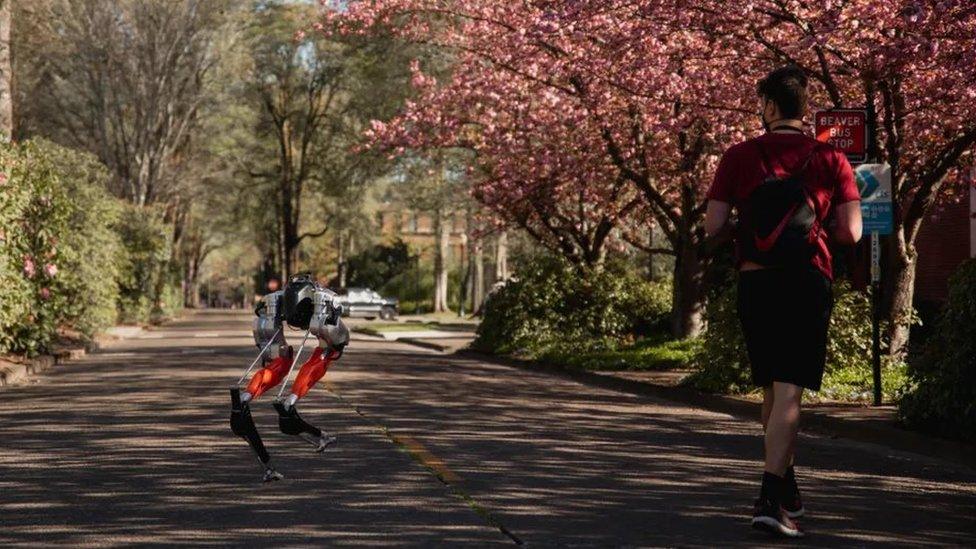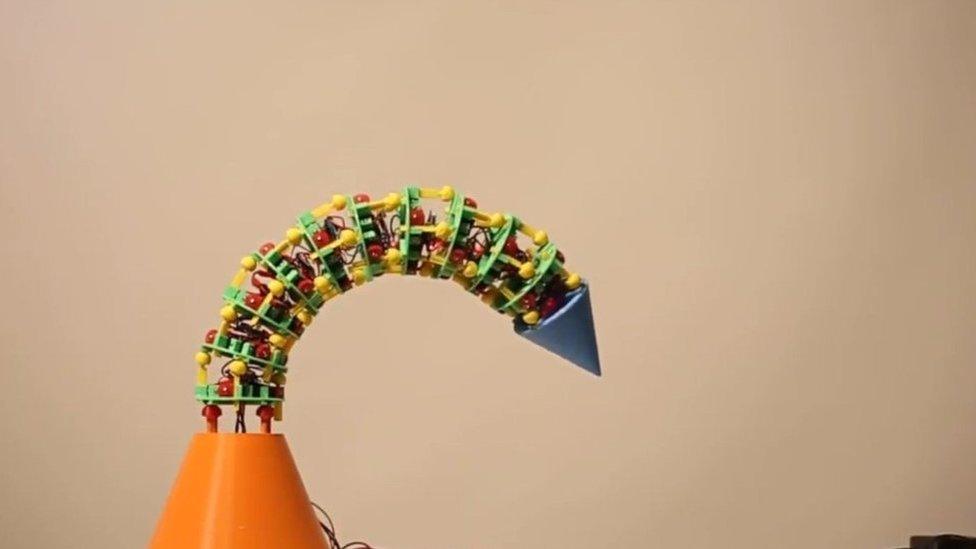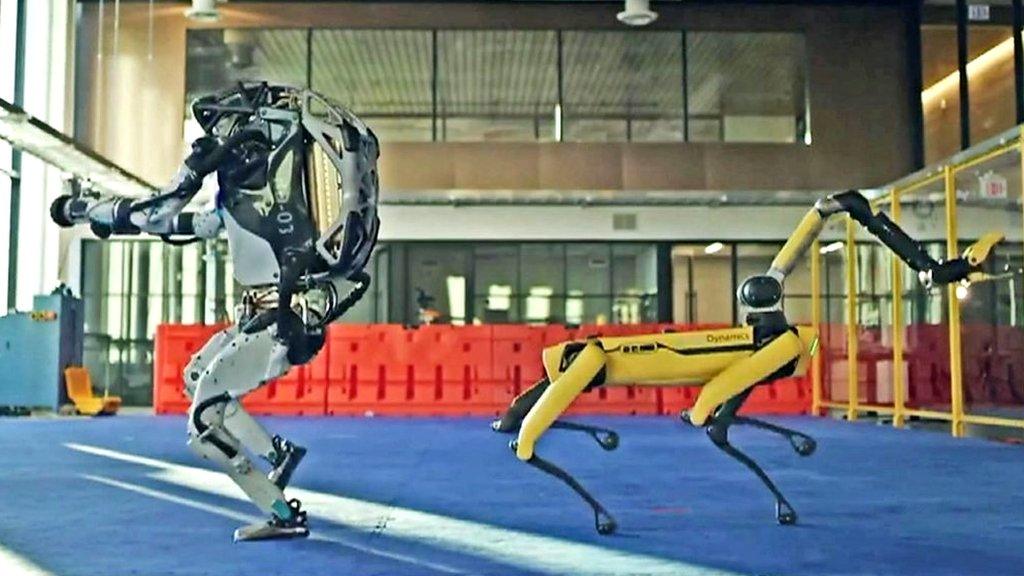Meet Cassie, the robot legs that can run a 5K!
- Published
- comments

This robot may not have a head or a body but that hasn't stopped it from reaching some pretty impressive milestones.
Cassie, the two-legged robot, has successfully ran five kilometres on a single battery charge.
It did have someone to control it remotely and chaperone it along the route to ensure it didn't get into any big difficulties.
Cassie managed to complete the route in 53 minutes, using special learning to teach itself to stay upright by shifting its balance while running.
Bipedal robots - that's robots that have two legs - are generally more expensive and complicated than robots with more legs
Their big advantage is that they can more easily navigate spaces made for humans, like stairs and tight corridors
But a major disadvantage is that they are often very unstable on their feet compared to other robots - simply because it is easier to knock something over when it's standing on two legs instead of four
Cassie is the creation of Oregon State University engineers, and their spin-off company Agility Robotics.
The company have also made a similar robot called Digit, which has arms to handle packages.
It has been used as part of a research project into autonomous delivery robots - that means robots that make deliveries by themselves.
The team behind Cassie say that successfully completing the run is a big deal.
But that doesn't mean accidents didn't happen! Cassie stumbled twice during the 5K run - once because the computer overheated, and the other because the human controller directed it to take a corner too quickly.

Cassie had to learn to make lots of subtle adjustments to be able to finish the route.
Yesh Godse, a student at the OSU Dynamic Robotics Laboratory, explained: "Deep reinforcement learning is a powerful method in AI that opens up skills like running, skipping and walking up and down stairs."
In the past, engineers have found it difficult to make bipedal robots navigate things like stairs.
But, the team decided to let Cassie take some outdoor steps with absolutely no prior experience of them.

This meant Cassie often ran into railings, slipped off steps or missed them completely, and occasionally even went backwards - but the robot still managed to complete the journey.
This is all thanks to the special feedback it gets from its robotic legs.
The work the team does will help expand the understanding of two-legged robots and could help make bipedal robots more common in the future.
Maybe it won't be too long before you'll get the chance to see one running past your house!
What do you think of Cassie? Do you think we'll have more robots in the future? Let us know in the comments.
- Published20 April 2021

- Published2 March 2021

- Published10 January 2021

